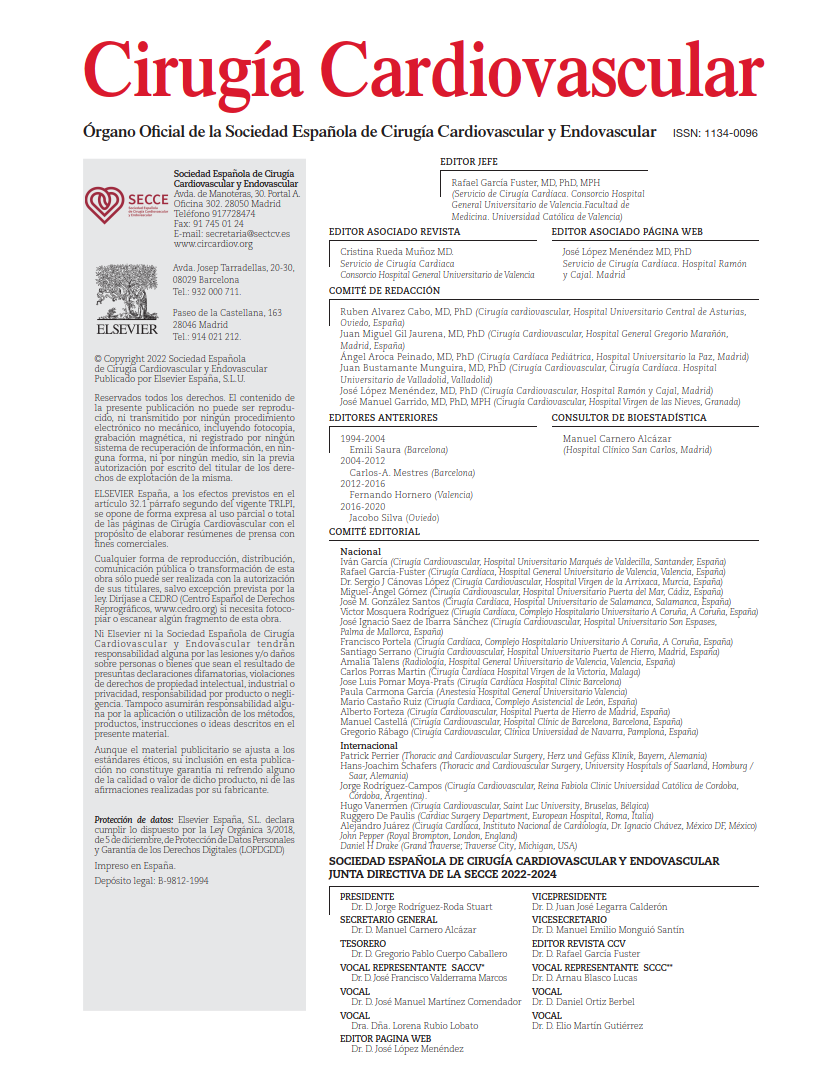Surgical mitral valve repair remains the treatment of choice for mitral valve disease. However, a substantial number of patients are not suitable candidates for repair and require valve replacement. In this setting, the use of surgical bioprostheses has increased progressively, as they offer improved quality of life and obviate the need for lifelong anticoagulation, or allow for the use of direct oral anticoagulants (DOACs) when indicated.
This single-arm retrospective observational cohort study collected real-world data from Medicare beneficiaries in the United States who underwent surgical mitral valve replacement (SMVR) with the St. Jude/Abbott Epic® porcine valve between 2008 and 2019. Data were obtained from administrative registries and linked to the manufacturer’s device database.
A total of 14,015 patients were included, regardless of concomitant cardiac surgery. Patients diagnosed with endocarditis were excluded. The mean age was 74 years, 58.3% were women, and the cohort exhibited a high burden of comorbidities: heart failure (76.5%), chronic pulmonary disease (70.5%), peripheral vascular disease (55.5%), and renal failure (36.2%).
At 10 years, the primary outcomes were: overall operative mortality of 9.9%; overall survival of 29.1%; 51.3% of patients remained free from rehospitalization, and 91.4% were free from reintervention.
In subgroup analyses, patients undergoing isolated SMVR had a 10-year survival rate of 35.8% and an operative mortality of 4.4%. Concomitant tricuspid valve repair did not increase operative mortality but was associated with a higher rate of permanent pacemaker implantation and lower 10-year overall survival. Among patients without prior heart failure, 77.6% remained free from heart failure rehospitalization at 10 years.
Multivariate analysis identified baseline renal failure, the need for concomitant procedures (particularly coronary artery bypass grafting), and prior heart failure as independent predictors associated with increased long-term morbidity and rehospitalization.
This study offers a representative and updated real-world perspective, confirming the robust durability of the St. Jude/Abbott Epic® bioprosthesis at 10 years, while also highlighting the limited survival among high-risk patients. These findings are clinically relevant when contextualizing risks and expectations for candidates undergoing mitral valve replacement, and when assessing the potential impact of emerging alternative therapies.
COMMENTARY:
This study represents one of the largest real-world cohorts with the longest follow-up evaluating the performance of the St. Jude/Abbott Epic® porcine valve in the mitral position. The exclusive use of administrative data, the lack of relevant clinical variables (such as ejection fraction, etiology of mitral disease, or functional class), and the involvement of the manufacturer in both data provision and funding warrant a cautious interpretation. Nonetheless, the study offers valuable insights for clinical decision-making. It demonstrates that isolated mitral valve replacement can be performed with low operative mortality, even in elderly patients with multiple comorbidities.
Indeed, 10-year mortality and rehospitalization rates were high, especially in patients with preexisting heart failure and renal dysfunction. These findings likely reflect not only structural valve degeneration, but also the underlying frailty of the patient population. In such cases, the absence of invasive treatment may be more attributable to therapeutic futility than to the lack of interventional alternatives, which were likely available during the study period.
Regarding prosthesis selection, the indications in this study appear aligned with current guidelines recommending bioprostheses in patients older than 70 years, or in those over 65 years with limited life expectancy. The observed durability at 10 years supports the valve’s long-term performance. However, previous studies (some already discussed in this blog) have reported structural valve deterioration (SVD) rates of up to 41.43% at 15 years, emphasizing the need to assess the performance of the Epic® valve beyond 10 years and in younger patients.
Notably, current guidelines recommend surgical ablation of atrial fibrillation (AF) in patients undergoing cardiac surgery who present with persistent or paroxysmal AF, particularly when the mitral valve is involved. The proportion of patients in this study receiving surgical ablation despite having an indication appears lower than expected. Moreover, those undergoing ablation showed significantly better long-term survival than those who did not, suggesting either a better preoperative status or an added benefit of rhythm control. Thus, surgical AF ablation should be considered a safe and beneficial procedure that ought to be routinely integrated into mitral surgery.
Finally, mitral valve disease remains one of the most prevalent cardiovascular conditions. Many patients with surgical indications are still not referred due to perceived operative risk. The development of new transcatheter mitral valve replacement (TMVR) technologies offers a promising alternative. Given their experience with mitral anatomy and repair techniques, cardiac surgeons are well positioned to lead the evolution and integration of these emerging therapies.
REFERENCE:
Rodriguez E, Smith R, Castro L, Baker CJ, Yu Y, Prillinger JB, et al. Ten-Year Follow-Up of Mitral Valve Replacement With the Epic Porcine Valve in a Medicare Population. Ann Thorac Surg. 2025 May;119(5):1027-1035. doi: 10.1016/j.athoracsur.2024.07.032.



